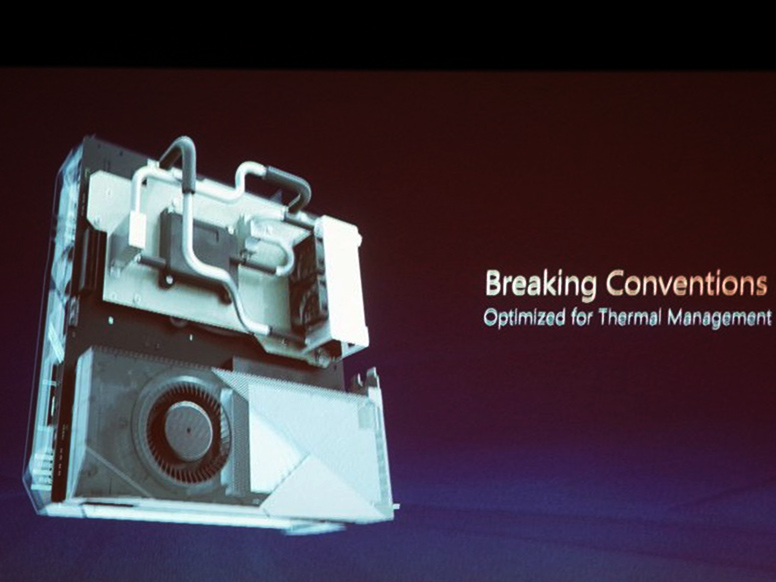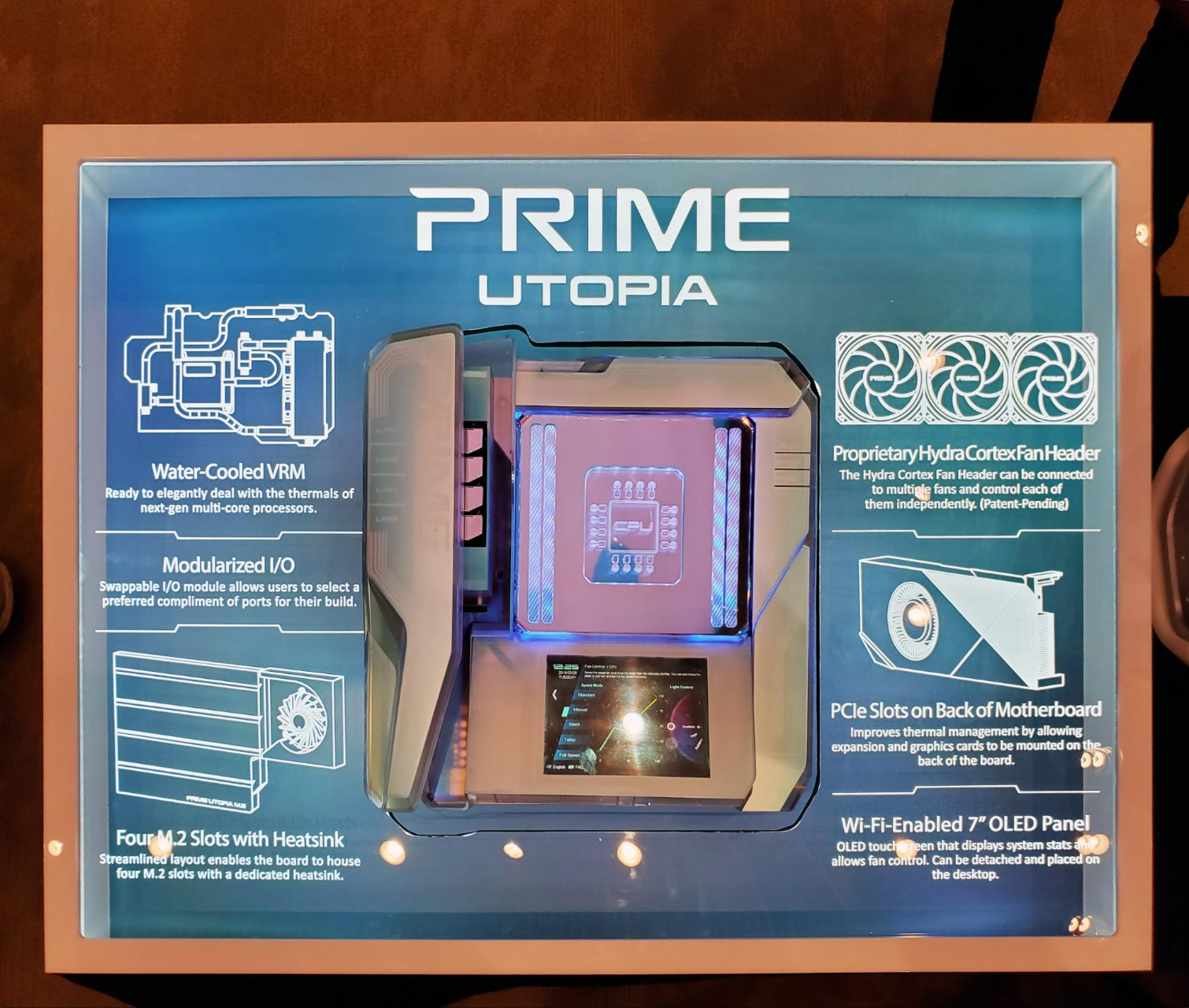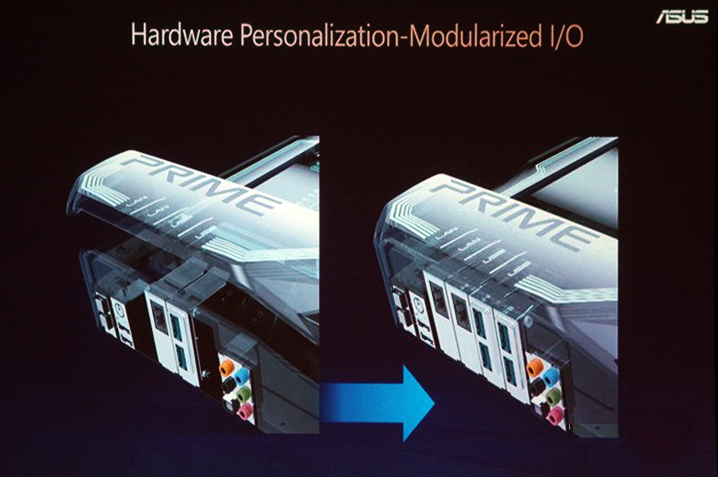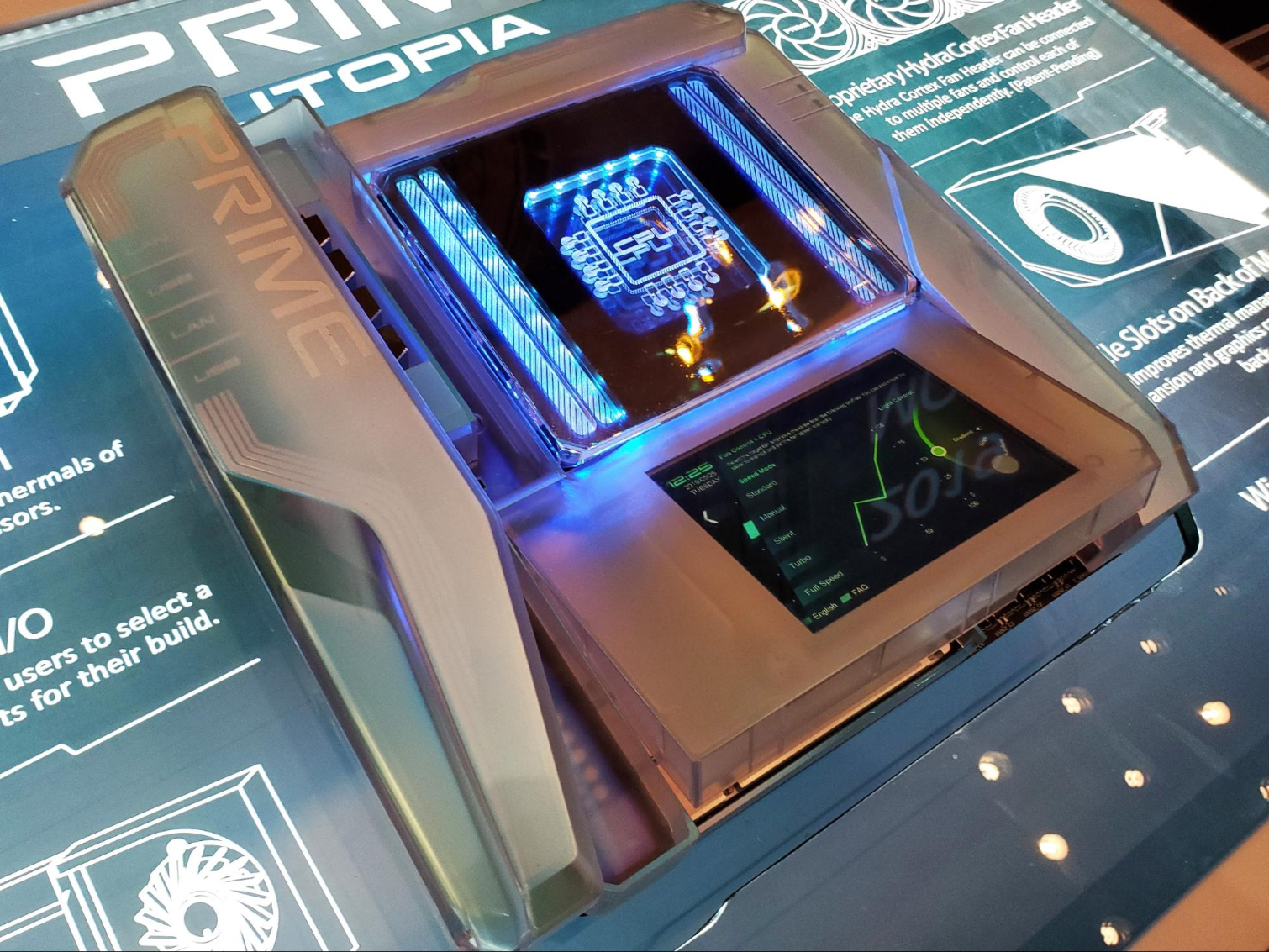Asus Prime Utopia Motherboard: Modular Ports, Rear PCIe and a Big Touchscreen
We’re not sure we’d go this exact route if we were to redesign the general concept of a PC motherboard from scratch. But Asus’ Prime Utopia concept is nothing if not an attempt and something different. Produced in conjunction with the company’s 30th anniversary and shown at the same Computex event as its X570 motherboards, the Prime Utopia re-imagines and twists motherboard conventions in several interesting ways.
First off, Asus has moved the expansion slots to the back of the board and angled them up, so you can show off your graphics card (assuming you have a window or a glass panel behind your motherboard.
This makes room for, among other things, four M.2 slots in a dedicated, actively cooled heatsink. Also up front, because why the heck not, is a 7-inch, connected OLED touch screen, letting you display system temps and stats, or whatever else you deem worthy of your big-screen board display.
The I/O ports are hot-swappable here, letting you drop in what you need and remove what you don’t, although the vertical USB layout Asus went with wastes quite a lot of space. As someone who never has enough USB ports, I like this idea in theory. But I probably wouldn’t like how much it would cost if implemented--especially given I’d try to jam in about 14 USB 3.2 Gen2 ports.
Asus has integrated liquid cooling of the VRMs, “to elegantly deal with the thermals of next-gen multi-core processors.” (Just what are you trying to say about our increasingly power-hungry enthusiast-class chips, Asus?) And the company has created a proprietary Hydra Cortex fan header that can connect up multiple fans while still allowing them to be controlled individually.
The company then went the extra mile and wrapped the whole package up in a sleek-looking open-air case with all-white components and minimal visible wiring. We’re not sure how many (if any) of the ideas here will make it into actual buyable motherboard products. But it’s nice to see Asus challenging the cookie-cutter conventions of base-level motherboard design and layout.
I’d also go as far as to say this is one of the nicest and most interesting-looking desktops I’ve seen so far at Computex. Even if from some angles it does look like Daft Punk designed an office landline phone for some retro-future Tron prequel that no one asked for.
Get Tom's Hardware's best news and in-depth reviews, straight to your inbox.
After a rough start with the Mattel Aquarius as a child, Matt built his first PC in the late 1990s and ventured into mild PC modding in the early 2000s. He’s spent the last 15 years covering emerging technology for Smithsonian, Popular Science, and Consumer Reports, while testing components and PCs for Computer Shopper, PCMag and Digital Trends.





